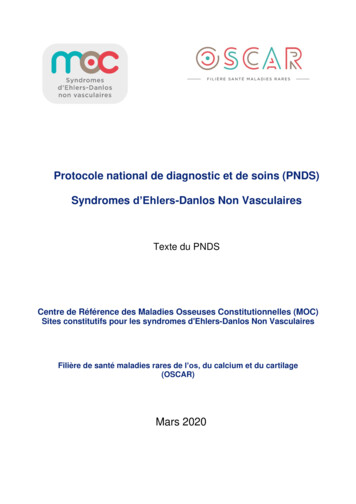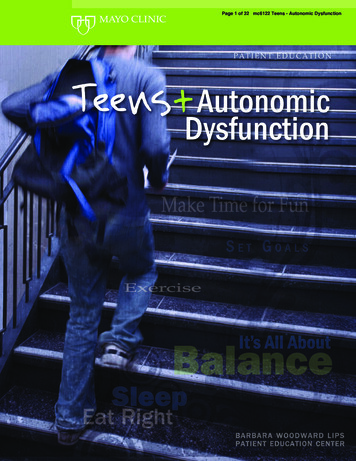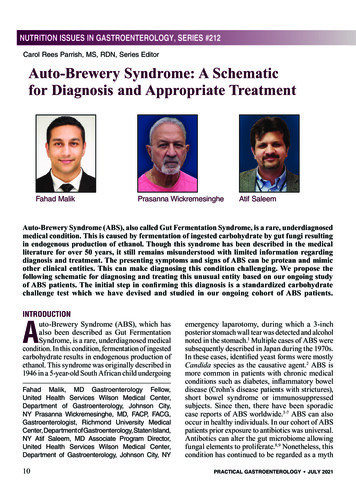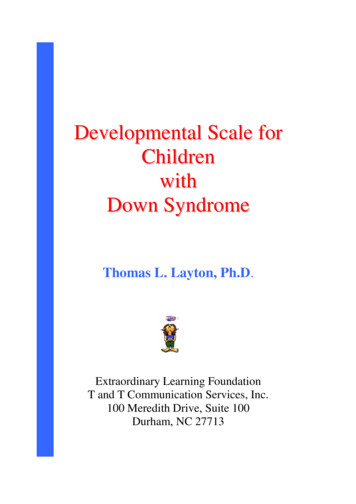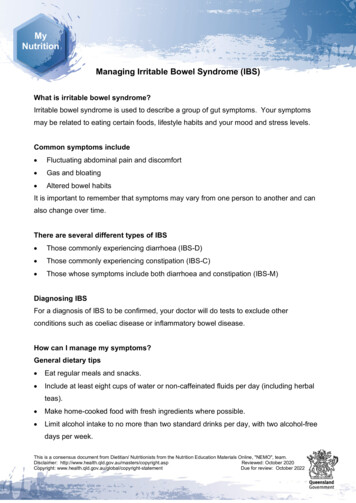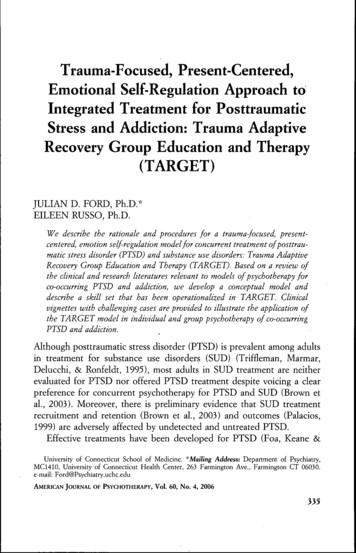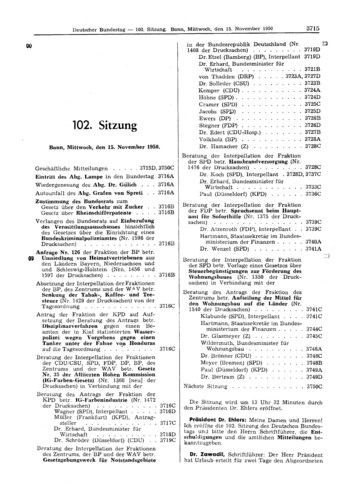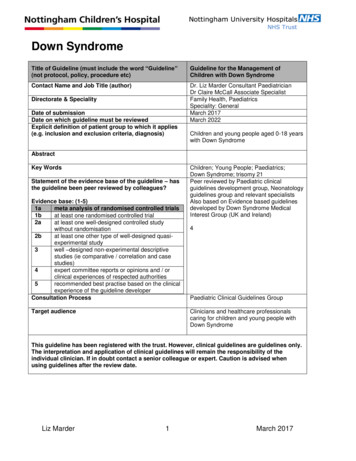
Transcription
childrenReviewPain Symptomatology and Management in PediatricEhlers–Danlos Syndrome: A ReviewEstée C. H. Feldman 1, *, Daniel P. Hivick 2 , P. Maxwell Slepian 3 , Susan T. Tran 4 ,Pradeep Chopra 5 and Rachel Neff Greenley 112345*Department of Psychology, Rosalind Franklin University of Medicine and Science,North Chicago, IL 60064, USA; rachel.greenley@rosalindfranklin.eduChicago Medical School, Rosalind Franklin University of Medicine and Science,North Chicago, IL 60064, USA; daniel.hivick@my.rfums.orgToronto General Hospital, University Health Network, Toronto, ON M5G 2C4, Canada;maxwell.slepian@uhn.caDepartment of Psychology, DePaul University, Chicago, IL 60614, USA; susan.tran@depaul.eduAlpert Medical School, Brown University, Providence, RI 02903, USA; painri@yahoo.comCorrespondence: estee.feldman@my.rfums.orgReceived: 29 August 2020; Accepted: 17 September 2020; Published: 21 September 2020 Abstract: Ehlers–Danlos syndromes (EDS) are a group of connective tissue disorders that manifest withhyperextensibility of joints and skin, and general tissue fragility. While not a major criterion for clinicaldiagnosis, pain is a frequently endorsed symptom across subtypes of EDS. As such, the present reviewaims to summarize research to date on pain characteristics and management, and the relationshipbetween such pain symptomatology and quality of life in pediatric EDS. Characteristics of pain,including theorized etiology, relative intensity and extent of pain are described, as well as descriptionsof frequently endorsed pain sites (musculoskeletal, and non-musculoskeletal). Interventions relatedto the management of musculoskeletal (e.g., pharmaceutical intervention, physical therapy) andnon-musculoskeletal pain (e.g., pharmaceutical and psychological interventions) are discussed,highlighting the need for additional research related to pediatric pain management in the context ofhypermobility syndromes. In addition, the relationship between pain in pediatric EDS and qualityof life is described. Finally, limitations of literature to date are described and recommendations forfuture lines of research are outlined.Keywords: Ehlers–Danlos syndrome; chronic pain; management of pain; musculoskeletal pain;quality of life; joint hypermobility syndrome; adolescent; emerging adulthood1. IntroductionThe Ehlers–Danlos syndromes (EDS) encompass a heterogeneous group of incurable connectivetissue disorders that are clinically characterized by skin hyperextensibility, joint hypermobility,subluxation and dislocation, and general tissue and vasculature fragility [1,2]. According to themost recent classification system, described by Malfait and colleagues, 13 subtypes of EDS arepresently described. The hypermobility type (hEDS), followed by the classical type of EDS presentmost commonly, together accounting for over 90% of cases [3]. Presently, gene mutations andrelated genetic testing have been identified and utilized for diagnosis of the classical, arthrochalasia,kyphoscoliosis and vascular forms of EDS [4]. However, no genetic testing is available for hEDS,and the mutations and mode of genetic transmission remain poorly understood. Some theorize asex-linked inheritance pattern, given that there are more female patients are diagnosed with hEDS thanmales, especially within hEDS [5,6]; however, underdiagnosis of male patients may also account forChildren 2020, 7, 146; ildren
Children 2020, 7, 1462 of 17this imbalance. Given the lack of genetic testing, diagnosis of hEDS is based on clinical examination(e.g., classification delineated by Malfait and colleagues [7]) and family history [2]. With respect to thethree most common forms of EDS (hypermobility, classical, vascular) focused on in the present review,all three present with proposed autosomal dominant inheritance, and share several diagnostic features.However, while major diagnostic criteria for vEDS are marked by severe cardiovascular and valvularco
2 Chicago Medical School, Rosalind Franklin University of Medicine and Science, North Chicago, IL 60064, USA; daniel.hivick@my.rfums.org 3 Toronto General Hospital, University Health Network, Toronto, ON M5G 2C4, Canada; maxwell.slepian@uhn.ca 4 Department of Psychology, DePaul University, Chicago, IL 60614, USA; susan.tran@depaul.edu
